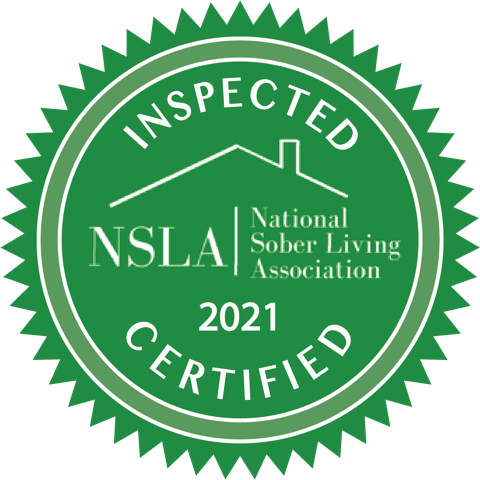When you get sober, you have to start handling strong emotions without drugs or alcohol. For many people, this involves managing powerful anxiety symptoms. Whether you’re gearing up for a big presentation or worrying about something your spouse said, it’s vital to navigate your nervousness without relapsing. Fortunately, experts have developed powerful, all-natural remedies for these exact situations. Read on to learn seven proven breathing exercises for anxiety.
Why Breathing Exercises for Anxiety are Effective
Anxiety is what happens to your body when you’re frightened or stressed. Whether the threat you’re facing is real or imagined, your fight-or-flight response may launch you into a high-alert state. Symptoms of this include rapid breathing, a quickened heart rate, gastric distress and feelings of dread.
To trick your body into relaxing, you can stimulate the vagus nerve with deep breathing. This is the longest nerve in your body—its name means “wanderer,” which is an apt moniker. The vagus nerve wanders all throughout your major organs, like your heart, lungs and gut. Because of this, it rules the parasympathetic nervous system: the processes responsible for rest, digestion, breathing and heart rate. Researchers from the Cleveland Clinic found that once the nerve is activated, stress levels can decrease.
Exercise 1: Belly Breathing Exercises
Any type of deep breathing exercise can provide relief from anxiety, but it can be tough to know if you’re breathing deeply enough. Here’s a simple approach for quick symptom reduction.
- Choose a comfortable place that makes you feel safe, like a bed, chair or quiet location outside. Sit, stand or lie down there.
- Put one hand on your chest and the other on your stomach.
- Breathe in through your nose at a very slow rate. Only stop when you’ve completely filled your lungs. You should notice your belly expanding as you breathe in—make sure it moves more than the hand on your chest.
- Breathe out until your lungs are emptied.
- Repeat, pacing your breathing so that each round is slow and unhurried.
Exercise 2: Lion’s Breath
Of all the techniques on our list, lion’s breath is probably the most fun. The first step is to sit comfortably, either in a chair or on the floor, or kneel on all fours. Breathe in through your nose until you can’t take in any more air. Then you’ll do your best lion impression: open your mouth wide, stick out your tongue, then let all of your breath out while making a “HA” sound. Repeat until you start to feel calmer.
Exercise 3: Alternating Nostrils
Anxiety commonly presents with hyperventilation. If you find yourself unable to calm down or slow your breathing, alternating nostrils can help.
- Sit comfortably and release any tension in your jaw.
- Close your eyes to improve relaxation.
- Use your dominant hand for this exercise. The other can relax by your side or on your knee.
- Place your dominant hand’s index and middle fingers on your forehead, right between your eyebrows.
- Position your ring and little finger on one nostril and your thumb on the other.
- When you’re ready, breathe in through the right nostril while closing the left.
- On exhale, switch your fingers. Now, you’ll breathe out through the left nostril while plugging the right.
- Try different patterns of inhalation and exhalation until you see results.
Exercise 4: Box Breathing
Of all the breathing exercises for anxiety, box breathing is the easiest to remember. This approach is famously popular among Navy SEALs. When you use this technique, you’re inhaling, holding your breath, exhaling and holding your lungs empty for the same amount of time.
To get started, inhale for four seconds. With your lungs full, count to four before you begin to exhale. Exhale for four seconds, then wait four seconds before breathing in again. You can play with different lengths of time as you master box breathing.
Exercise 5: Mindful Breathing Exercises
Sometimes, a distraction can help you to forget about the cause of your anxiety. Choose something positive to focus on as you breathe: a meaningful word, a happy memory or an image that brings you joy. You can also make a sound during this process. Once you’ve found your focus, take a series of slow, deep breaths while maintaining it.
Exercise 6: Taking Gentle Breaths
During this process, you should take care not to force any breaths. Resonance breathing is a gentle technique perfect for those who find more regimented methods stressful.
- Close your eyes. If possible, lie down.
- Breathe in gently, without straining your lungs, for six seconds.
- Without forcing air out, quietly exhale for six seconds. Imagine the air floating out of your body.
- Slow yourself to five breaths per minute and continue for ten minutes.
Exercise 7: Pranayama (Yoga Breathing)
Yoga is a great practice for those seeking stress reduction. To take advantage of this breathing technique, place one hand on your lower bellow and the other in the space beneath your collarbone. When you inhale, see if you can gently expand these spaces without tensing your throat, back or shoulders. Be mindful of how your body moves as you breathe in and out.
Support for Those Navigating Early Recovery
The early days of recovery can be challenging, especially for those managing anxiety disorders. Still Waters offers comprehensive programming for people in this stage of life. Our gender-specific facilities provide adult men and women with the fellowship and coping skills needed to succeed in sobriety.
To learn more, contact our admissions team.





